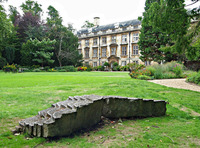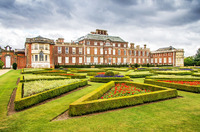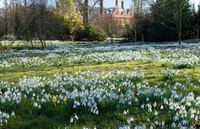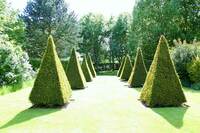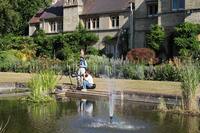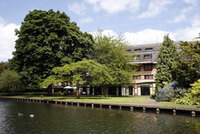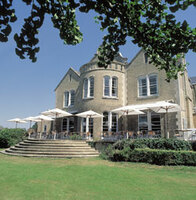- England
- Scotland
- France
- Holland
- Germany
- Italy
- Spain
- Portugal
- USA
- China
- Japan
- India
- Iran
- Advice
- Gardens
- England
- Scotland
- France
- Holland
- Germany
- Italy
- Spain
- Portugal
- USA
- China
- Japan
- India
- Iran
- Advice
- Garden Tours
Since opening in 1846, the Cambridge University Botanic Garden has been an inspiration for gardeners, an exciting introduction to the natural world for families and a refreshing oasis for all our visitors.
This listed, heritage Garden was created by John Henslow, teacher and guiding light of Charles Darwin, and is the showcase for over 8,000 plant species from around the world, all immaculately displayed amongst a wonderful framework of mature trees.
Henslow’s trees form the mature structure of the Garden, creating both the towering evergreen grandeur of the Main Walk and the magical enclosed atmosphere of the Woodland Garden. Within this treescape lies the unique botanical masterpiece of the Systematic Garden. Designed in 1845, its intricate pattern of 150 beds displays 100 families and 1600 species of hardy herbaceous plants. The Rock Garden, with a beautiful vantage point over the Lake and Woodland Garden, boasts plants from every continent, while the newly restored teak Glasshouse Range displays the world’s flora through the ‘Drama of Diversity’ plantings.
Additions to the Garden during the 20th century reflect the horticultural and scientific developments of the last 100 years. The Dry Garden is an experiment to create a beautiful garden that survives the dry Cambridge climate, without watering. A Genetics Garden explores the outcome of research undertaken here by William Bateson and his collaborators, who laid the foundations of modern genetics. The ancestry of the rose is unravelled in the Rose Garden, and the Chronological Bed outlines the history of plant introduction to Britain.
Throughout the year the Botanic Garden provides visitors with inspiration through its range of landscapes, and the beautiful manipulation of colour, structure and scent in plants. Spring in the Garden is marked by the leafing up and flowering of trees and the eruption of the woodland understory. In Summer the Scented Garden, the roses and the lavender collection fill the air with perfume, and in Autumn the Garden explodes with fiery displays of leaf and fruit. Finally, as the year ends, the magical Winter Garden unfolds into a remarkable display of coloured stems and leaves, brave flowers and heady winter scents.
Nine national collections including species tulips, geranium and fritillary as well as important research collections of lavender, viburnum and shrubby honeysuckles.
The Jade Vine, which flowers each spring in the Tropical Houses is a spectacular sight as hundreds of metre-long, jade coloured inflorescences dangle down from the canopy.
1 Brookside, Bateman Street, Cambridge, Cambridgeshire, England, CB2 1JE
Open at 10am daily. Closes at 6pm April-September, at 5pm in February, March and October and at 4pm November - January.
Adult £4.00 Concession £3.50 (over 60s and students with a recognised ID card) Children 0-16 Free, must be accompanied by an adult at all times.
